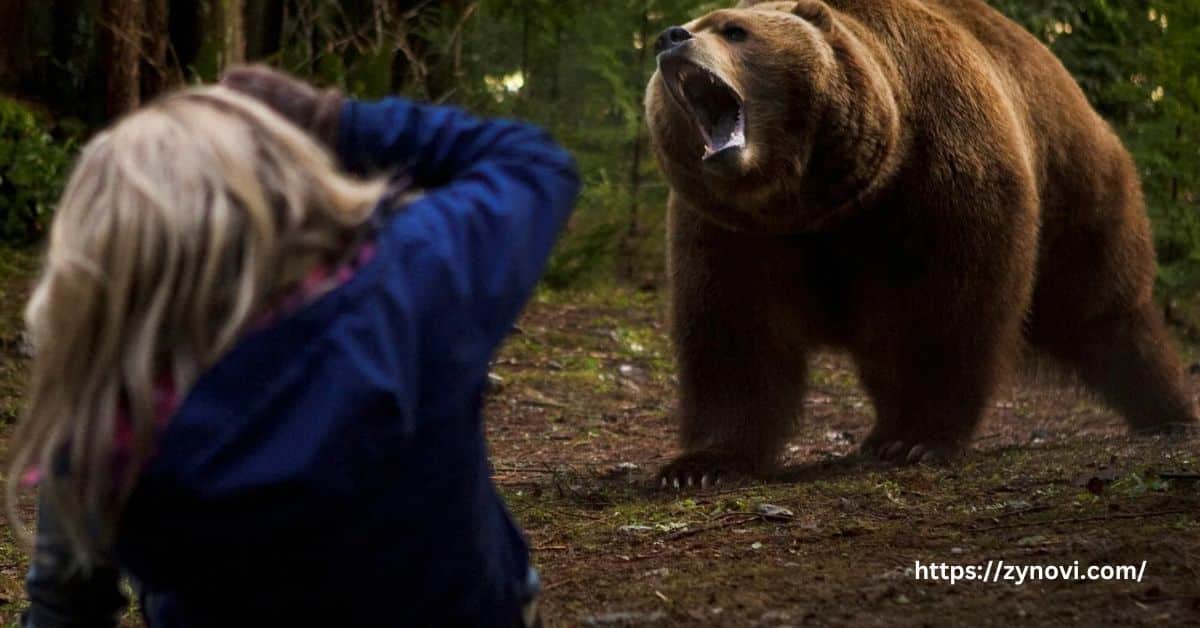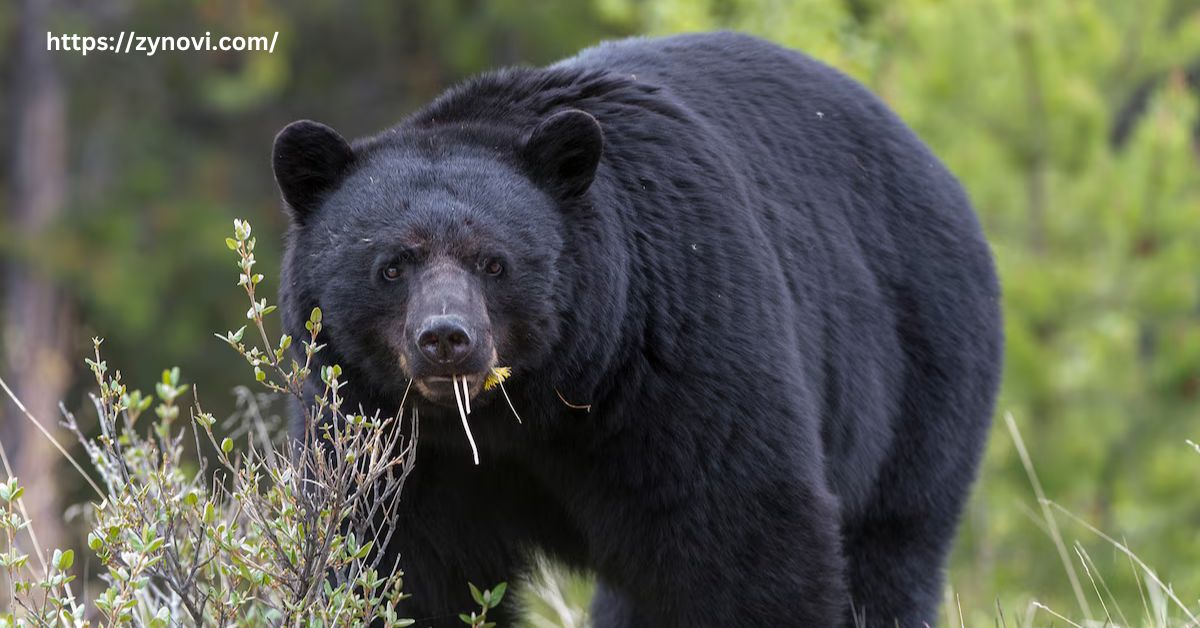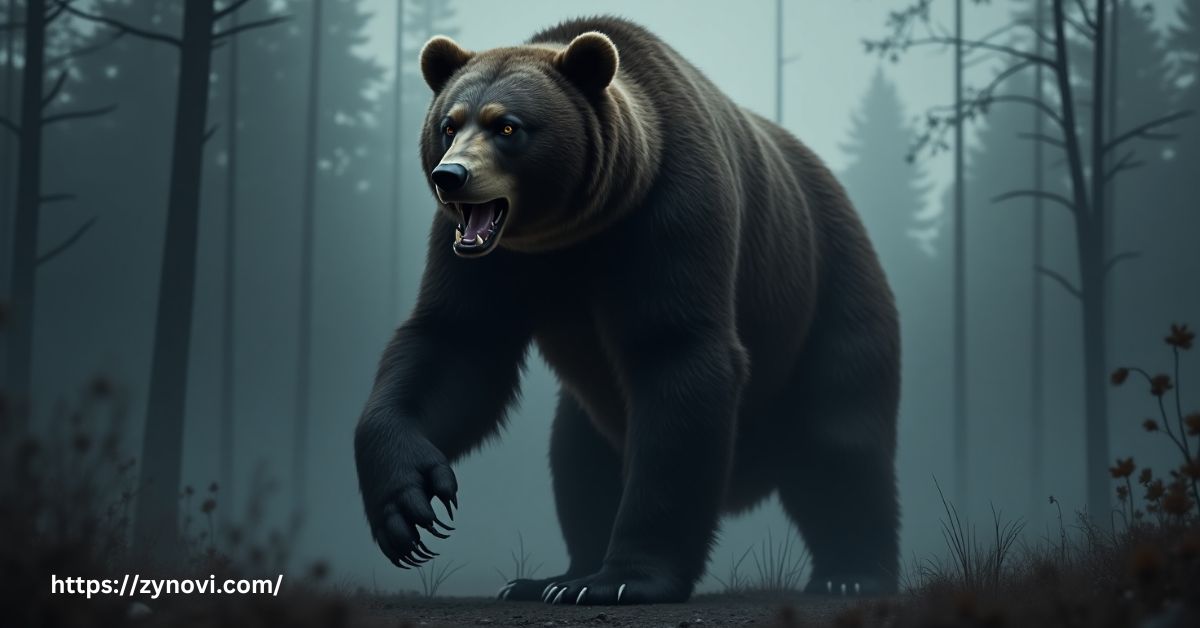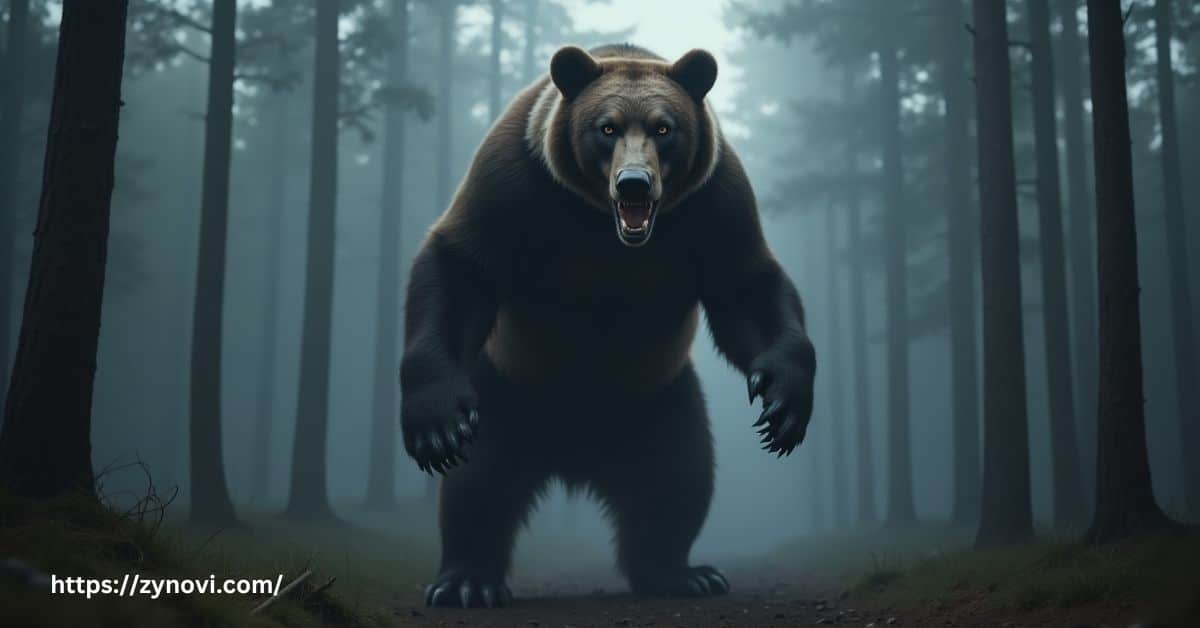Do Black Bears Attack Humans? Black bear attacks on humans are infrequent, but they can happen if the bear feels cornered or provoked.
It’s a question that many outdoor enthusiasts, hikers, and campers ask when venturing into bear country. The idea of a black bear encounter can be intimidating, but understanding their behavior can make all the difference in ensuring your safety.
In this article, we’ll find deep into what you really need to know about black bears, their aggression triggers, and how to avoid dangerous situations. Keep reading, because knowing the truth about these fascinating creatures could be the key to coexisting with them peacefully on your next adventure!
Who Are Black Bears?
Black bears, scientifically known as Ursus americanus, are the most widely distributed bear species in North America. They thrive in diverse habitats, including dense forests, mountainous regions, and even suburban neighborhoods.
Despite their name, black bears display a striking range of fur colors, including black, brown, cinnamon, and, in rare cases, white such as the elusive “Spirit Bears” found in British Columbia, Canada. These adaptable mammals play a vital role in their ecosystems.
Physical Characteristics and Distribution
- Size: Adult male black bears typically weigh between 125-600 pounds, while females range from 90-300 pounds. This size difference, known as sexual dimorphism, is common in bear species.
- Height: When standing on their hind legs, black bears can reach an impressive height of up to 6 feet, making them an imposing sight despite their usually shy nature.
- Fur Variations: Black bears exhibit a wide range of fur colors, including jet black, brown, cinnamon, and even white. The rare white “spirit bears” are a unique genetic variation found in specific Canadian populations.
- Distribution: Black bears inhabit a vast range, thriving in forests, mountains, and wetlands across the eastern United States, Canada, and the Pacific Northwest. Their remarkable adaptability even allows them to venture into suburban areas in search of food and shelter.
| Feature | Details |
|---|---|
| Average Weight (Male) | 125–600 pounds |
| Average Weight (Female) | 90–300 pounds |
| Fur Colors | Black, brown, cinnamon, white |
| Habitat | Forests, mountains, suburban regions |
Typical Behavior and Diet
Black bears are omnivorous, consuming a diet of berries, nuts, insects, and small mammals. Their strong sense of smell seven times stronger than a blood hound guides them to food sources.
They are largely solitary animals, except during mating season or when a mother raises cubs.
- Activity Cycles: These bears are generally crepuscular, meaning they are most active during dawn and dusk. However, their activity patterns can vary depending on food availability and human presence.
- Hibernation: In colder climates, black bears hibernate for up to seven months, surviving on fat reserves accumulated during the summer and fall. Their metabolism slows dramatically during this period to conserve energy.
- Intelligence: Black bears are highly intelligent animals known for their problem-solving abilities. They can open coolers, navigate obstacles, climb trees with ease, and remember food locations for years, showcasing their remarkable memory and adaptability.
Do Black Bears Attack Humans? Separating Myths from Facts

Would a black bear eat a human? The idea of a black bear attack can be terrifying, but such incidents are rare. Let’s break down the circumstances that may lead to an encounter turning dangerous.
Frequency and Context of Black Bear Attacks
Do Black Bears Attack Humans? Statistics show that fatal black bear attacks are exceedingly uncommon:
Rarity of Fatal Attacks: Fatal black bear attacks are extremely rare. Between 1900 and 2020, only 67 fatalities were recorded across North America, highlighting their generally non-aggressive nature.
Human Provocation: Many encounters happen because of human actions, such as surprising a bear, approaching too closely, or attempting to feed them, which can trigger defensive behavior.
Food-Driven Encounters: Urbanized areas often attract black bears searching for food, especially unsecured garbage or pet food, leading to increased human-bear interactions.
Categories of Black Bear Attacks
Defensive Attacks: These occur when a bear feels threatened, such as a mother protecting her cubs. Warning signs often include bluff charges, loud huffing, or jaw-popping sounds, and the goal is usually to deter rather than harm.
Predatory Attacks: Though exceedingly rare, these are deliberate and highly dangerous. In such cases, the bear may stalk its victim, often driven by hunger or curiosity, and display persistent, focused behavior.
Quote by Dr. Stephen Herrero (noted bear expert):
“Black bears rarely view humans as prey. Most incidents occur due to human behavior provoking defensive reactions.”
Reasons Behind Black Bear Aggression

Understanding why a black bear may become aggressive is key to avoiding dangerous situations.
Defensive Behavior
Protecting Cubs: Mother black bears are highly protective and may become aggressive if they sense their cubs are threatened. This maternal instinct often leads to defensive displays or attacks.
Startled Reactions: A bear surprised at close range may react instinctively with aggression, viewing the situation as a threat to its safety or territory.
Signs of Defensive Behavior:
- Huffing or clacking teeth: Audible warning signals to deter perceived threats.
- Standing on hind legs: Not a sign of aggression but an attempt to assess the situation better.
- Bluff charges: Sudden sprints toward the threat, stopping short to intimidate rather than attack.
Do Black Bears Attack Humans? Predatory Behavior
While rare, black bears can exhibit predatory attacks, especially if:
Lone Males Without Food: Male black bears, particularly solitary ones, may resort to predatory behavior if they are struggling to find food. Their hunger can drive them to stalk and potentially view humans as an easy source of prey.
Remote Area Encounters: In isolated locations, black bears may come across humans when food sources are scarce. If the bear is sufficiently hungry or curious, it may approach humans with predatory intent, though such incidents are exceedingly rare.
Seasonal Human Interactions
Spring: As black bears emerge from hibernation, they are often hungry and searching for food. This increased foraging can lead to more human encounters, especially in areas where bears forage for easily accessible food like garbage or crops.
Fall: In preparation for hibernation, black bears enter a period of hyperphagia, where they consume large amounts of food to build up fat reserves. This heightened food-seeking behavior can result in more aggressive interactions with humans as they search for high-calorie foods.
How to Prevent Black Bear Attacks
The best way to stay safe is to avoid encounters altogether. Here’s how:
Avoiding Bear Encounters
Make Noise While Hiking: To avoid surprising a bear, make noise as you hike, especially in dense areas. This alerts bears to your presence, allowing them to avoid you, reducing the chance of a startled encounter.
Travel in Groups: Bears are more likely to steer clear of larger groups of people, so traveling in pairs or groups can lower the chances of an encounter. The more people, the less likely a bear will feel threatened or curious.
Store Food in Bear-Proof Containers: Bears have an exceptional sense of smell and can be attracted to food. Using bear-proof containers for storing food while camping or hiking ensures bears aren’t drawn to your area, decreasing the risk of an encounter.
Secure Garbage in Bear-Resistant Bins: In residential areas, ensure that garbage is stored in bear-resistant bins. Bears can easily smell food in trash, and unsecured garbage is one of the most common attractants in urban and suburban settings.
Responding to a Bear Encounter
If you encounter a bear:
Stay Calm and Back Away Slowly: If you see a bear, remain calm and gradually move away. Sudden movements may provoke curiosity or aggression.
Avoid Running: Running can trigger a bear’s predatory instinct to chase. Instead, maintain your composure and retreat slowly.
Raise Your Arms or Hold Up a Jacket: To appear larger and more intimidating, raise your arms or hold up a jacket. This signals to the bear that you’re not prey.
Survival Tactics During an Attack
If the Bear Attacks Defensively: In the case of a defensive attack, bear spray is your best defense. Aim for the bear’s face and muzzle to create a barrier and give you a chance to escape.
For Predatory Attacks: If the bear is acting predatory, fight back aggressively. Target the bear’s eyes and snout, as these areas are most sensitive and could deter the attack.
Important: Playing dead is ineffective with black bears. This strategy is better suited for grizzly bears.
The Role of Bear Spray in Protection

Bear spray is a vital tool for anyone venturing into bear territory.
Bear Spray as a Vital Tool: Bear spray is one of the most effective and non-lethal ways to protect yourself in bear country. Carrying it can make a crucial difference in preventing an attack.
How It Works: Bear spray contains capsaicin, the compound found in hot peppers. When sprayed, it irritates the bear’s eyes, nose, and throat, causing discomfort and disorientation, which leads the bear to retreat.
Effective Range: Most bear sprays have a range of 15–30 feet, giving you enough distance to deter a bear before it can get too close.
| Feature | Details |
|---|---|
| Active Ingredient | Capsaicin (pepper extract) |
| Effective Range | 15–30 feet |
| Usage Tip | Aim for the bear’s face/muzzle |
Bear Spray Guidelines:
- Keep it Accessible: Always carry bear spray in an easily reachable spot, like a holster or outer pocket, so you can quickly grab it in an emergency. Never store it deep in a backpack or inaccessible location.
- Practice Using It: Familiarize yourself with the operation of the spray before heading into bear country. Practice how to remove the safety clip and aim the nozzle, ensuring you’re ready if a bear encounter occurs.
- Check Expiration Dates Regularly: Bear spray loses effectiveness over time, so it’s important to check the expiration date. Replace it if necessary to ensure maximum potency when you need it most.
FAQs
How Often Do Black Bears Attack?
Black bear attacks are extremely rare, with less than one fatal attack per year across North America.
Could a human fight a black bear?
It is highly dangerous and unlikely for a human to win in a physical confrontation with a black bear. It’s best to avoid fights by practicing preventive measures.
What to do if a black bear is chasing you?
Never run; instead, stand your ground, make yourself appear larger, and back away slowly while maintaining eye contact.
Which bears attack humans the most?
Grizzly bears are generally more aggressive toward humans than black bears, although both species can pose a risk under certain circumstances.
Can a human survive a black bear attack?
Yes, with quick action, such as using bear spray or defending yourself aggressively, many black bear attacks are survivable.
Conclusion: Do Black Bears Attack Humans?
Black bears, while generally not a significant threat to humans, require respect and understanding. Their behavior is typically non-aggressive unless provoked or threatened.
By being aware of their habits and following essential safety measures, such as carrying bear spray and making noise while hiking, we can reduce the risk of encounters. These majestic animals play a crucial role in maintaining ecological balance, and with the right precautions, humans and black bears can coexist peacefully.
As we explore their habitats, it’s essential to stay prepared, stay informed, and appreciate their place in nature.










